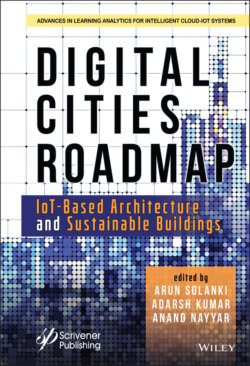Читать книгу Digital Cities Roadmap - Группа авторов - Страница 14
1.1 Introduction of ML Sustainable Resilient Building
ОглавлениеThe hyperconnectivity generated by IoT will enhance the assurance of Smart Sustainable Resilient Building (SSRB) as all basic construction facilities and goods from your home electronics to your plant vessels have now been connected [1–5]. Nevertheless, this hyperconnectivity could hinder the control of SSRBs at the same time. In particular, massive quantities of streaming data are required from SSRB and its residents. The management of large data streams is becoming more and more relevant with ML, testing, compaction, learning and filtration technologies. In order to obtain a greater interpretation of human beings than their environment computers, the amount of sensory data obtained by sensors and devices needs to be processed by algorithms, converted into details and derived expertise [6–8]. This awareness can also contribute, and most significantly, innovative goods and services that change our lives drastically. For starters, smart meter readings may be used to help estimate and control power usage. To optimize this convenience, reduce expenses adapting to requirements of its residents, the SSRB requires sophisticated tools to understand, anticipate and make intelligent decisions. SSRB must also provide a variety of wearable sensor data linked to its patients and produce new remote sensors. SSRB algorithms include estimation, decision analysis, robots, smart devices, wireless sensor networks, interactive, web computing and cloud computing and include several other developments. Cognitive maintenance of offices is necessary in several SSRB programs for starters, fitness, safety, energy management, illumination, repair, the elderly and digital entertainment through these technologies.
